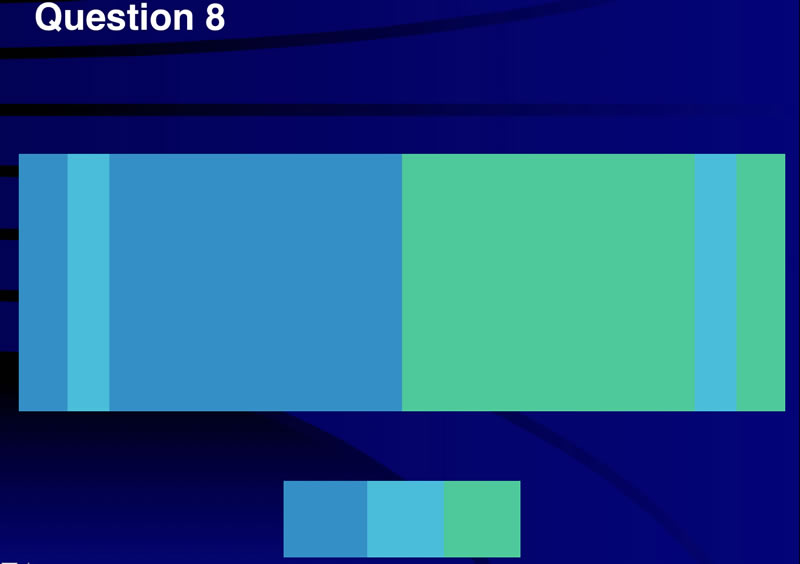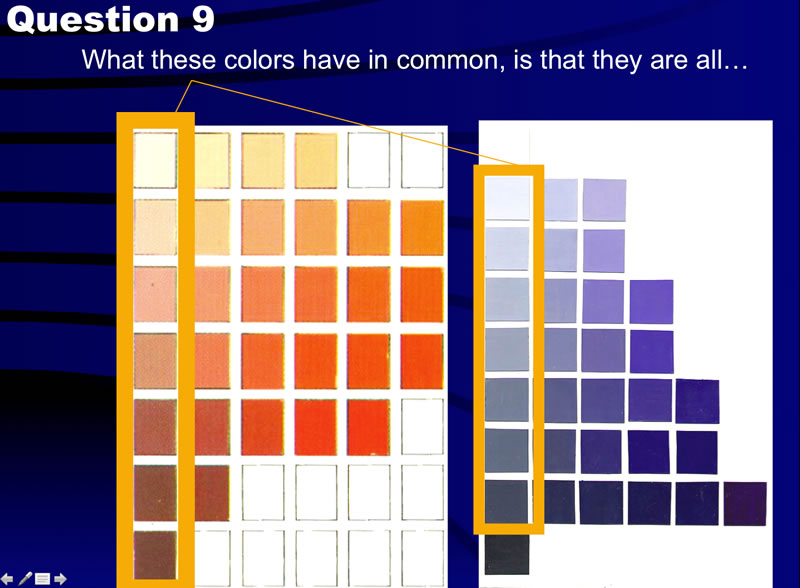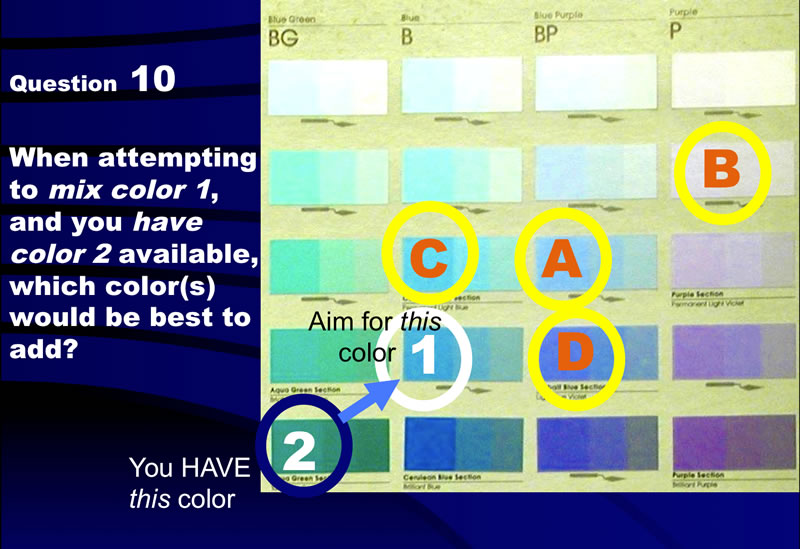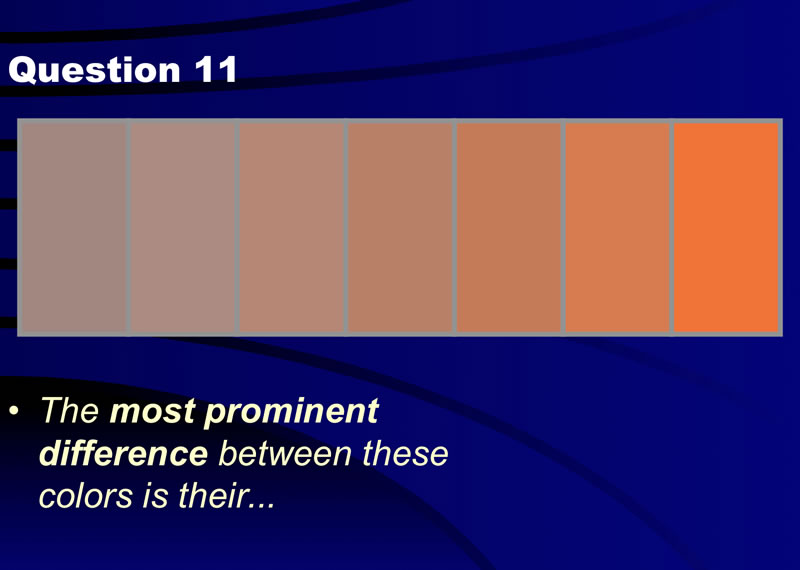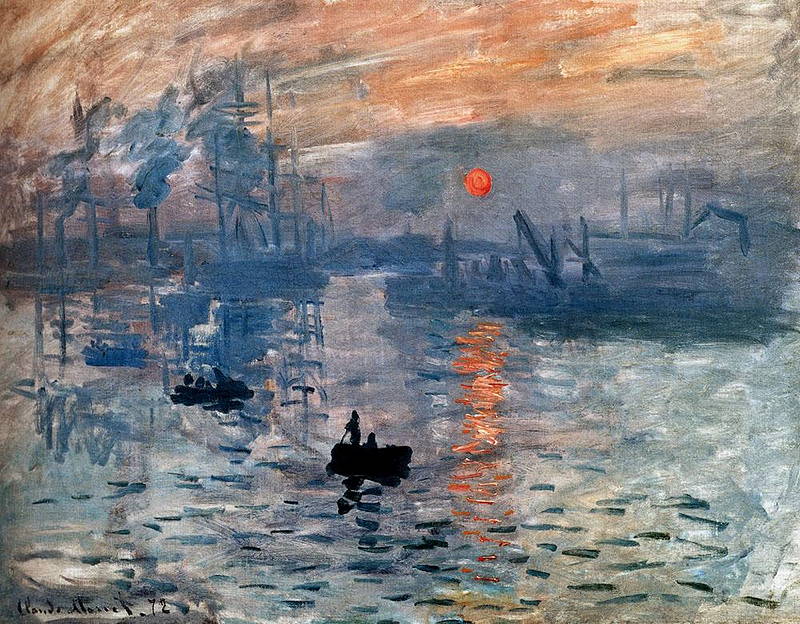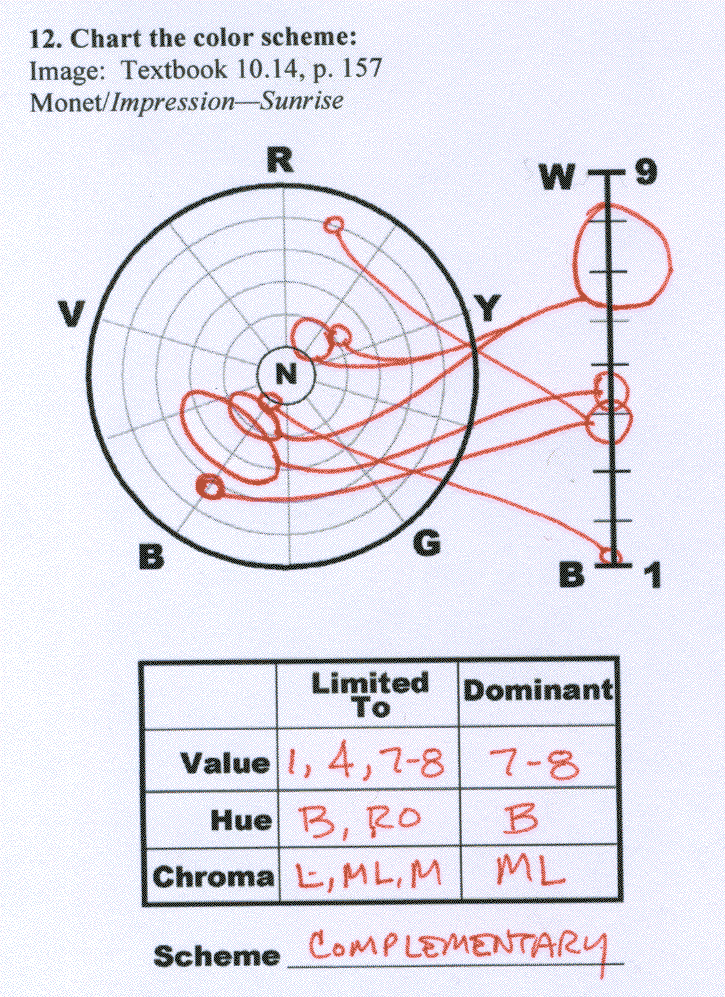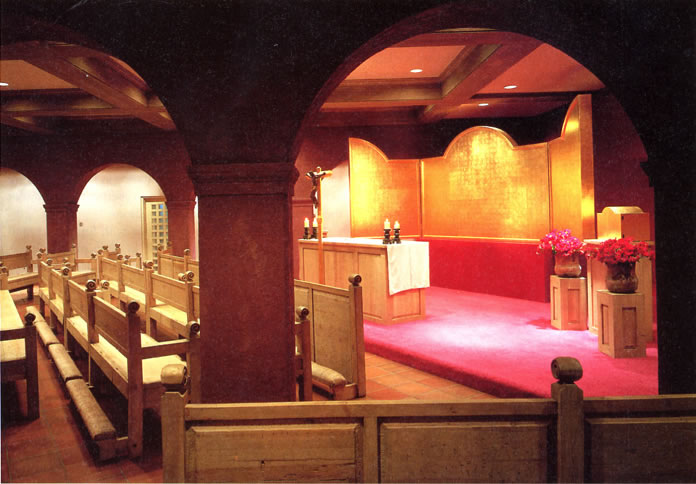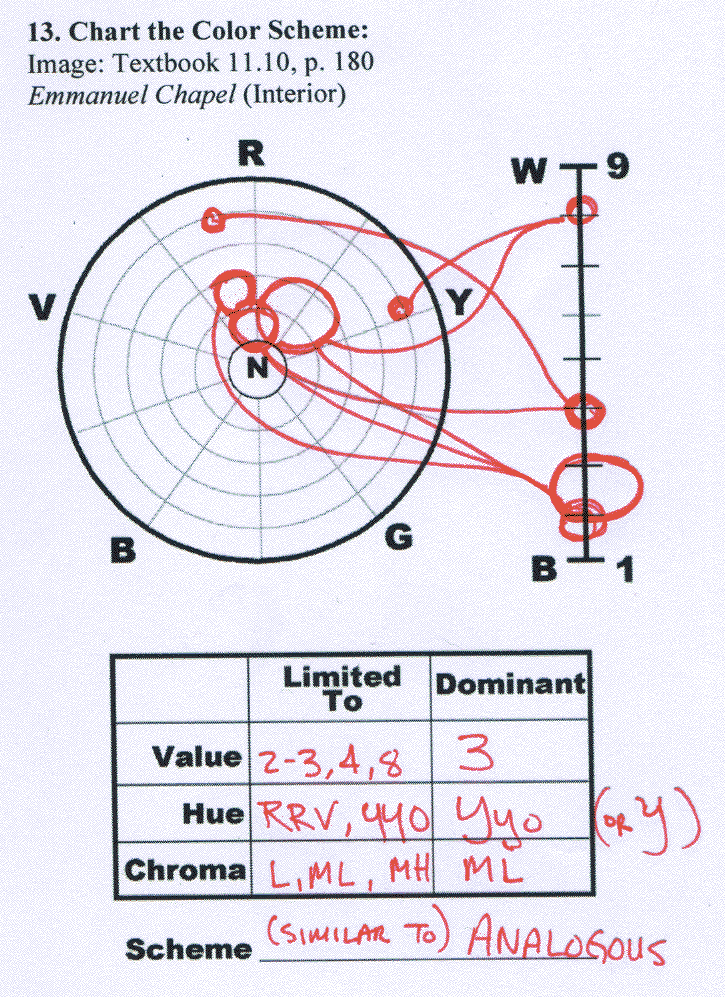If you've not tried the quiz, go back here, download the quiz and give it a try.
Then come here and check your results.
Questions & Answers
1. The hues Red, Yellow and Orange are generally considered to be …
a. Neutral colors b. Complementary colors c. Cool
d. Warm e. High chroma colors
d. Warm
2. When some colorA is mixed with a little of its complement, the result will be that…
a. …the mixed color is a true neutral. b. …the mixture’s chroma is lowered.
c. …the mixed color is a tertiary color. d. …the mixture’s value is higher.
e. All of the above.
The only certain outcome is that the chroma of colorA will be lowered.
A. ...a true neutral... No. Not if only a little of ColorA's complement is mixed in.
D. ...value is higher... Only in a few special cases (a bit of yellow added to Violet) might this occur. But even then, subtractive color issues will tend to produce a darkening.
C. ...tertiary color... Tertiary is a hue trait that won't be changed by mixing in a bit of a complement. Or course, in those cases where colorA is a tertiary color, (e.g. Yellow-Green), it will stay a tertiary color until so much of its complement is added that it becomes a neutral.
3. Night vision depends primarily upon…
a. rods. b. cones c. the fovia
d. peripheral vision e. a full moon
Rods are your friend in low light. Your cones won't help you.
Your fovias are optimized for day-light vision in their centers, and have good night vision just outside that center.
Well, yes, a full moon helps.
4. A stained glass window alters the color of incident (incoming) light primarily by …
a) …refraction. b) …reflection. c) …absorption.
d) …transmission. e) …addition.
Absorption is the process that actually turns sunlight into red light. More specifically here, the pigments in stained glass window selectively absorb some colors of incoming light, while allow other colors to pass through (transmit) the glass.
5. Standing inside Notre Dame Cathedral, in Paris, you see the red, blue and gold stained glass. The colors that you see are…
a)…colors created by refraction. b)…colors created by reflection.
c)…light that has been absorbed. d)…light that has been transmitted. e) …colors created by “additive color”.
See note above. We see the light that makes it all the way through the glass — light that transmitted.
6. Analogous colors…
a. May help create color harmony b. Are hues without a common parent
c. Help establish bold contrast and variety d. Are next to each other on the color wheel
e. A and D
D is clearly true ... by definition analogous colors have hues that lie close to each other on the color wheel.
A is also true in that harmonies are, in fact, easily built using color that have a great deal in common. Analogous hues are very similar visually and have at least one shared "parent hue" among them ... and often two.
7. The phenomena of color afterimage is also known as…
a. Successive contrast b. Simultaneous contrast c. Color constancy
d. Idopsin exhaustion e. Color blindness
